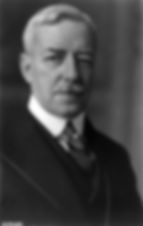This text comes from our book, Light to the Nations II: The Making of the Modern World.
Though not one of the warring powers, Pope Benedict XV had received a copy of the peace note Kaiser Wilhelm had sent to the Allies in December 1916. Despite its haughty tone, and the fact that the Allied governments had rejected it, the kaiser’s peace note encouraged the pope. He began to promote his own plan for an end to the war.

Since Germany had been the first to seek peace, Benedict told his nuncio to Bavaria, Archbishop Eugenio Pacelli, to feel out the German government’s desire for peace. In June 1917, Pacelli met with German Chancellor Bethmann-Hollweg.
In discussing Germany’s war aims, Bethmann-Hollweg said he could agree to four points for peace:
1. that all nations limit their armaments;
2. that international courts be established to judge grievances between the warring
sides;
3. that Belgium be restored to independence; and that
4. Germany and France come to a peaceful settlement over Alsace-Lorraine.

Kaiser Wilhelm himself approved the four points outlined by Bethmann-Hollweg’s plan and permitted him to submit a peace resolution to the German Reichstag. But generals Hindenburg and Ludendorff were not pleased with either Bethmann-Hollweg or his peace proposal, and they used their influence to force the chancellor to resign. Reluctantly, Wilhelm accepted Bethmann-Hollweg’s resignation and appointed Georg Michaelis, a favorite of the generals, as chancellor.
But, though he was a friend of the generals, Chancellor Michaelis told Pacelli he accepted the four points as a basis for peace talks. At Michaelis’s urging, in July the Reichstag approved a resolution based on the points. With this happy news, Pope Benedict in early August sent to the warring governments sealed envelopes containing a document he had long been preparing—the papal proposal for an end to the war and a permanent peace in Europe.
Like his earlier calls for peace, Pope Benedict’s peace proposal of August 1, 1917, was based on his conviction that the warring powers should seek “peace without victory.” Divided into seven headings or “points,” the proposal offered a realistic plan for a peace founded on the spirit of forgiveness as well as the rule of international law.
The “Seven Points” can be summarized as follows:
1. Relations between nations should be governed by justice rather than the
“material force of arms”—warfare.
2. Nations must reduce their armaments.
3. Instead of relying on armies and war to settle disputes, nations should establish
an international institution with the ability to settle international disagreements
and the power to enforce its decrees.
4. All nations should enjoy “true liberty and common rights over the sea.”
5. The warring nations should seek no payments (“indemnities”) from each other
for the damages and costs of the war. To continue “such carnage” only “for
economic reasons,” said the pope, “would be inconceivable.”
6. Each side should evacuate foreign territories occupied during the war. Germany
should evacuate Belgium and France, and, in return, the Allies should restore to
Germany her foreign colonies.
7. Where different nations claim the same territory (for instance, Austria and Italy,
Germany and France), they should discuss the future of the disputed territory in
the light of justice. They especially should consider what the people of the
territory desire as well as the “general welfare” of all nations.
The Allies’ response to the Seven Points was disappointing. The British ambassador told the pope that as long as the Central Powers did not promise to withdraw from Belgium and guarantee that they would not cause another war, the British could not enter into peace talks with them. France did not reply to the pope; neither did Italy—and, indeed, this was not surprising; for in the secret Treaty of London, they and Great Britain had agreed to exclude the pope from peace negotiations.

As for the United States, Secretary of State Robert Lansing gave President Wilson’s reply in a long letter, dated August 27, 1917. “The object of the war,” said Lansing’s letter, “is to deliver the free peoples of the world” from “an irresponsible government which . . . secretly planned to dominate the world.” After lecturing the pope on the ideals of the American people, the letter said the United States would not “take the word of the present rulers of Germany as a guaranty of anything that is to endure” unless it represented the “will and purpose of the German people.” Lansing expressed President Wilson’s doubt that the pope’s peace plan could actually work.
The response of the Central Powers was more satisfactory. Emperor Karl wholeheartedly endorsed the pope’s plan. Bulgaria expressed her loyalty to the pope. Even the Ottoman sultan wrote that he was “deeply touched by the lofty thoughts of His Holiness.”
The key to peace, however, was Germany. Though Kaiser Wilhelm seemed to accept the pope’s peace proposals, Chancellor Michaelis’s reply was disappointing, for it failed to mention Belgium. On September 22, Archbishop Pacelli reminded Michaelis that, without a discussion of the future of Belgium, there would be no peace. Two days later, Michaelis wrote Pacelli that the German government supported the pope’s peace efforts and that Belgium should be the first item discussed in peace negotiations. The negotiations, however, went no further.
Pope Benedict’s peace efforts, like those of Emperor Karl, had failed to stop the war.
Music of a Dying Civilization
La Rondine (“The Swallow”), one of the least performed of the Italian composer Giacomo Puccini’s works, premiered in Monte Carlo in March 1917. Though its second act is reminiscent of the street and cafe scene in Puccini’s earlier La Boheme, it does not share the latter’s youthful exuberance. One feels in La Rondine something of the malaise of a civilization that had grown overripe — the civilization that was being destroyed in the trenches of World War I. We present here the quartet from the cafe scene from Act II of La Rondine.